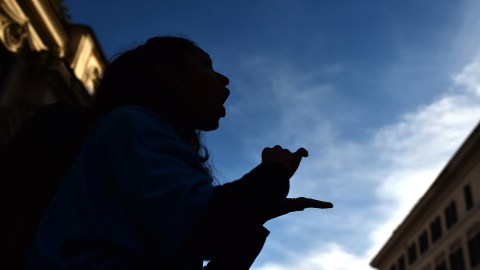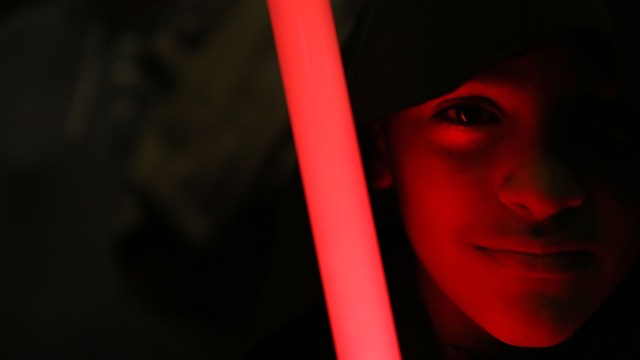This New Innovation Could Be a Game Changer for the Hearing-Impaired

I’m waiting for the day when language barriers are eradicated and everyone can communicate through a universal translator a la Star Trek. But what about the language of those who can’t speak? Google Translate can interpret around 90 languages, but for the 70 million people worldwide who speak languages entirely based on gestures, there isn’t yet some sort of electronic interpreter for them.
Actress Maysoon Zayid works with people who are in their 20s and 30s, and she talks about how “they’re terrified for the person interviewing them to know they have a disability.”
Saudi designer Hadeel Ayoub has developed a way to bridge the gap between the hearing and hearing-impaired community with the SignLanguageGlove. The device compiles data from five flex sensors and an accelerometer to track the orientation of the user’s hand. The latest version of this wireless prototype is able to translate signing gestures into text and speech.
“I had one mission when I started this project and it was to facilitate communication between all kinds of disabilities, eliminating barriers between people who have a visual, hearing, or speech impairment,” Ayoub said. “The prototypes each have a new additional feature, an LED light, and a speaker for example, that took me one step closer to my goal.”
The most recent glove prototype also tucks away many of the wires by sewing them into the lining. Ayoub explained in a press release that she “didn’t want all the wires to intimidate users, making them feel the glove will be complicated to use or really fragile. People tend to lean to the cautious side when approached with new high-tech products, which contradicts the main purpose of this glove, which is to help make lives easier.”
Ayoub hopes to incorperate a WiFi feature into the next version of the glove, which would enable it to send text to an app for translation.
Technology has the ability to empower many people; it’s important to think of the people who could most benefit from such advancements.
***
Natalie has been writing professionally for about 6 years. After graduating from Ithaca College with a degree in Feature Writing, she snagged a job at PCMag.com where she had the opportunity to review all the latest consumer gadgets. Since then she has become a writer for hire, freelancing for various websites. In her spare time, you may find her riding her motorcycle, reading YA novels, hiking, or playing video games. Follow her on Twitter: @nat_schumaker
Photo Credit: GABRIEL BOUYS / Getty Staff





